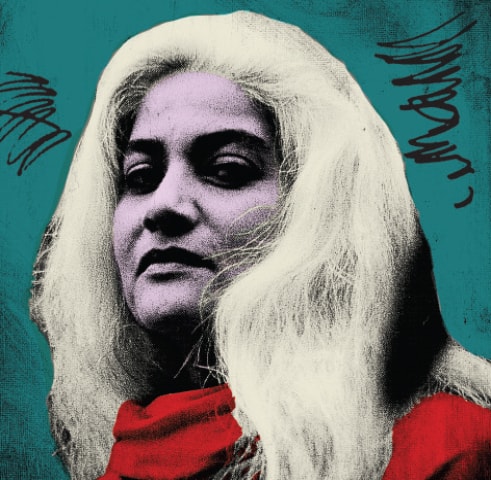
Legend has it that the peacock, the most beautiful of birds, cries in anguish when it glances down at its ugly feet. Stretching the metaphor considerably, it could reflect the contradictions of Pakistan — some of the world’s most beautiful mountains and rivers and filthy city streets; hospitable and generous people and selfish drivers; exquisite embroidery and everyday drab clothing; flower garlands painstakingly strung and badly-hacked trees.
On a daily basis, we swing between admiration and anguish.
For a nation that loves poetry, somewhere along the 70 years, we lost the poetry of life. We usually cite political turmoil, economic anxieties, poor education levels, cultural influx and a host of other equally viable explanations. But these factors are not new to this region that has seen at least 3,000 years of invasions, colonisation, wars, economic disparity and displacement.
Our national bird is not the peacock, but the chakor. The bird of mythology — a modest-looking bird who longs for the moonlight —shedding tears for what is unattainable and finding some solace when the moon is full and generously visible to the beloved from afar.
This anxious longing underpins our ghazals, television dramas, our political slogans, the many prayers we share on WhatsApp and is even heavily disguised in our humour.
Metaphysics, religious salvation, political and social justice are big conundrums that, judging by histories of nations, simply evolve rather than get solved. Ordinary people living ordinary lives only long for peace of mind, a degree of reassurance, and even a glimmer of a pathway to a positive future.
Seeking an artistic solution makes the user take active decisions and connect purposefully with nature and society.
Philosophers, from the Athenians onwards, have consistently assumed that art and creativity are essential to society, making grand statements such as the one by Alexander Spirkin: “No thinking and emotionally developed person can remain indifferent to literature, poetry, music, painting, sculpture and architecture.” But the reality is that the majority of people, never notice the design of buildings, never step into a gallery or attend a mushaira or classical music evening. Yet, knowingly or subconsciously, art does play a central role in our lives. Everything we use, wear and inhabit is designed. From perfume to cuisine we engage all our senses for an aesthetic — rather than simply functional — purpose.
Having had occasion to make several visits recently to the Aga Khan Hospital in Karachi, I cannot but conclude that the calm behaviour of the many patients, most of whom seem to have come from far-off villages, is to a great extent due to the beautifully designed and well-maintained buildings and grounds. I imagine they would behave quite differently in the more chaotic and rundown Civil or Jinnah hospitals.
Art with a capital A may be located in galleries and museums, but artfully lived lives can exist in every back lane and community. It is more important for people to be artistic than to be artists. John Dewey writes, “Living is itself the supreme art; requires fineness of touch; skill and thoughtfulness of workmanship.”
This is something that is familiar to us all, even if it has been squeezed out of our present lives. Terms like qareena, saleeqa, hunarmandi and tehzeeb were commonplace at one time. The Anjuman Taraqqi-i-Urdu republished a five-volume compendium commissioned in 1941 by Maulvi Abdul Haq, who sent the author across India to study the traditional arts and crafts listing the instruments, terminologies and methods used. Few of us now know the difference between a sadri, kamri and mirzai waistcoats, or that a jugni is a necklace designed to fit in the space between the collarbones and that mir farsh are decorated metal objects placed on a floor covering, to keep it in place in a strong breeze.
Yet, we remain naturally sensitive to beauty and elegance, usually unknowingly. We are charmed by the elegant sweeping movement of a woman adjusting a dupatta or sari pallu on her head, or men casually wrapping six yards of cloth into a perfect turban, weaving a string of jasmine flowers into a plait or singing a song about a full moon. Philosopher Henri Lefebvre suggests we seek life in “moments of revelation, emotional clarity and self-presence.”
Seeking an artistic solution makes the user take active decisions and connect purposefully with nature and society. At one end of engagement, there could be Naqqash Ustad Ashiq of Multan, hand-painting shrine ceilings, and at the other end, a child who puts a flower in an empty medicine bottle for Mother’s Day.
There is a need to consciously acknowledge our artistic selves. In doing so, we become both self-aware and aware of our surroundings in a manner that we feel connected to and responsible for not just our personal space, but also our surroundings or anything in our eyeline. Perhaps we would not tolerate piles of rubbish outside our homes or workspaces; we would be conscious of the aesthetic experience of not just our own space but the context of its surroundings, affecting and reflecting our artistic self.
“To live among beautiful surroundings and make ugly things is more directly lowering than to live among ugly surroundings and make beautiful things,” says writer, feminist and social reformer, Charlotte Perkins Gilman.
Durriya Kazi is a Karachi-based artist and heads the department of visual studies at the University of Karachi
Email: durriyakazi1918@gmail.com
Published in Dawn, EOS, June 3rd, 2018















































Dear visitor, the comments section is undergoing an overhaul and will return soon.